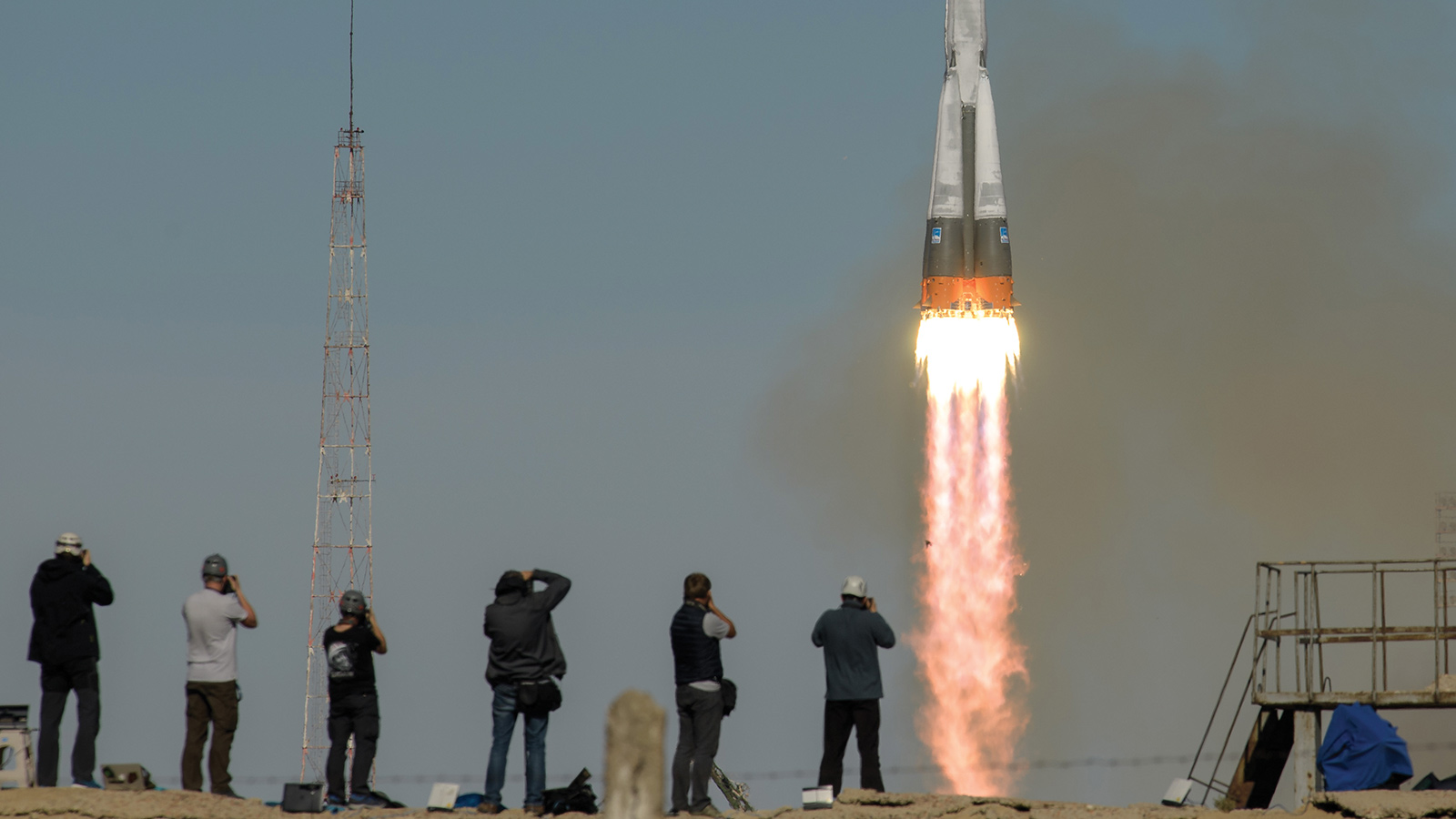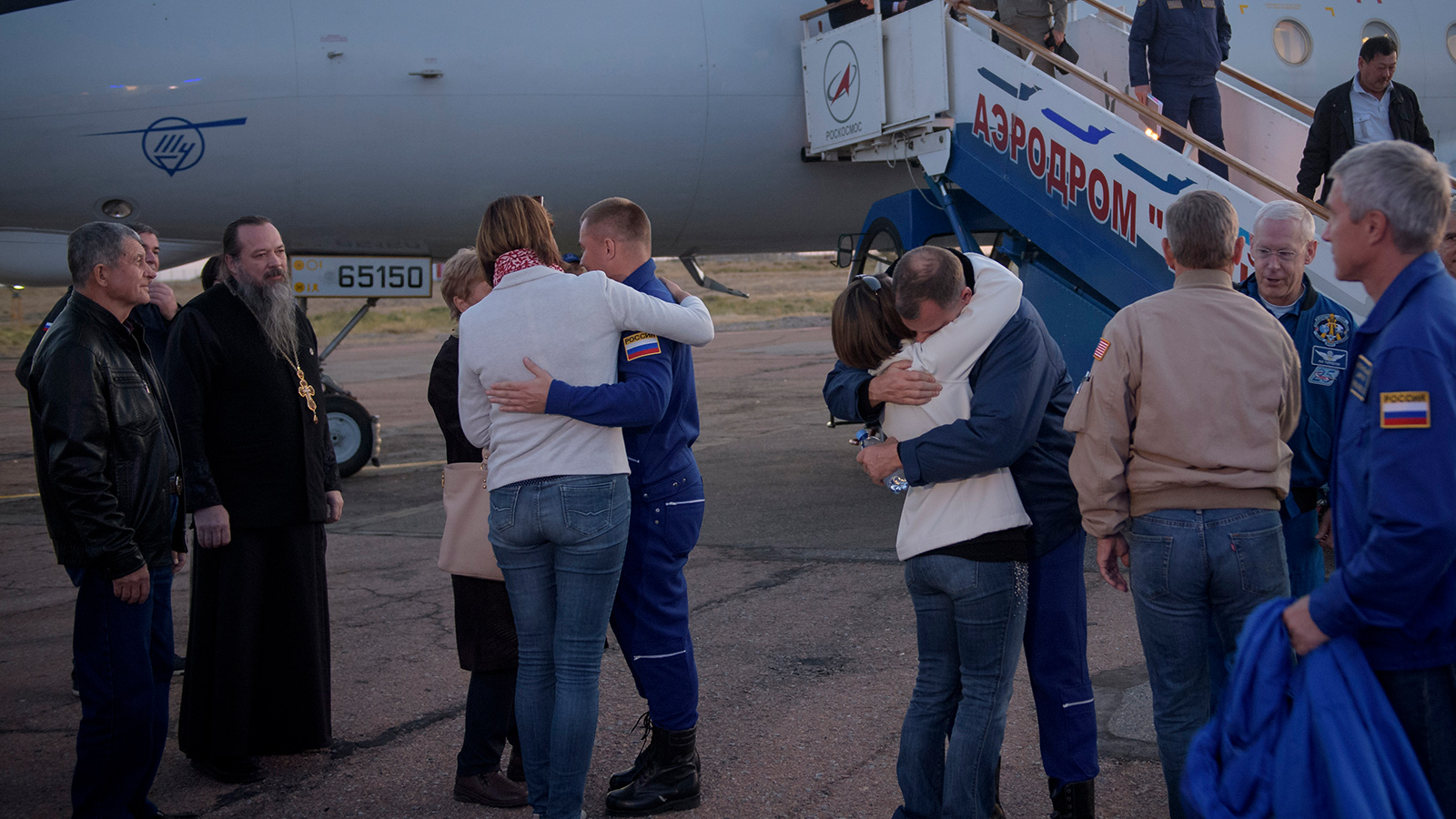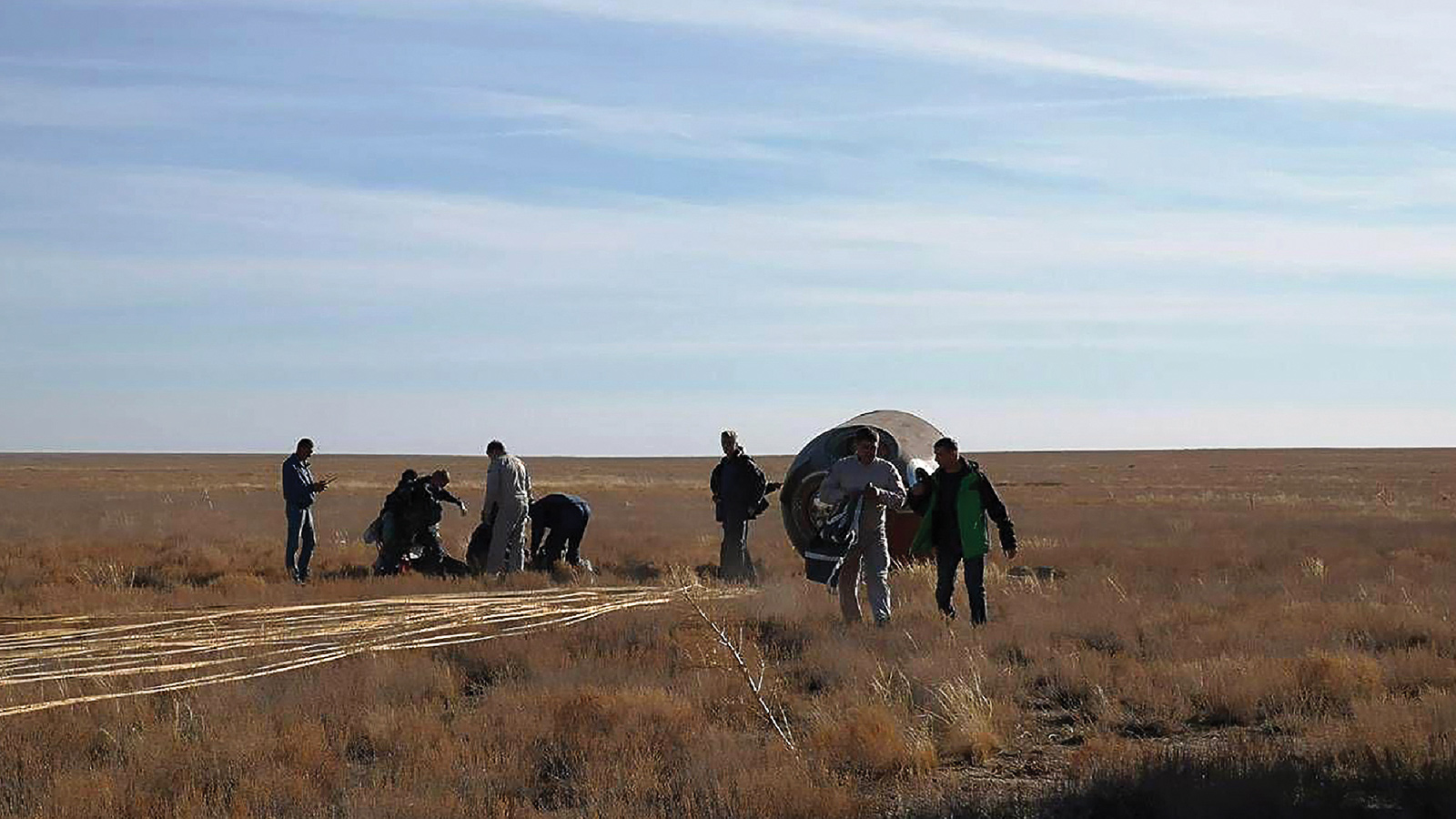Stay Up to Date
Submit your email address to receive the latest industry and Aerospace America news.
Russia’s botched launch last month of an astronaut and cosmonaut to the International Space Station was good news in that no one died, and in another sense too. NASA and Roscosmos received a non-fatal wake-up call about spaceflight safety. Those involved in this brush with tragedy should dig below the proximate technical causes of the failure of the Soyuz rocket to examine cultural factors. James Oberg, a Houston-based space expert, explains.
By JAMES OBERG
At a briefing a few weeks into the Columbia shuttle disaster investigation, board chairman retired U.S. Navy Adm. Hal Gehman stressed how his purpose went beyond the precise causes of this disaster. He intended to delve deeper to the more profound question of how the NASA safety culture could have deteriorated to the point where too many specific countersafety decisions were made.
They were already well long in that process. As a newly hired NBC News space consultant, I pointedly asked him how much of that section of the report he could have written before the accident. He ruefully replied that he probably could have written most of it.
The accident with the Soyuz MS-10 launch on Oct. 11 fortunately did not lead to crew fatalities, but the required investigation otherwise follows an eerily parallel path. The mechanical cause of the booster breakup will be quickly determined and fixed, and flights of the launch vehicle — including carrying crews — will resume.
Solving the broader safety issue will require the Russian space industry to finally dig deeper into its culture. The reality is that there have been years of warning signs and words of caution from observers in Russia and overseas. The span from 2012 to 2016 provided an earlier wake-up call, although none of the failures involved human missions. The Phobos-Grunt Mars probe fell back to Earth in early 2012 because of a poor design and faulty parts. A Proton rocket crashed in 2013 because of overloading in the upper stage propellant tanks. Careless fabrication led to the loss of a Progress supply ship in 2016.
Veteran cosmonaut Georgy Grechko, who died in 2017, spoke to the Interfax news agency about that string of failures. He said, according to a translation, that space hardware is “precision technology that borders on fine art, yet young people are not being trained and old people are leaving.” He elaborated: “The scariest thing is that in 20 years everything was brought to ruin, so now no matter what they do, no matter what they pay to save it, nothing will be accomplished in 20 days. … You need at least 10 years to rebuild everything. … The staff employed are either over 60 or under 30. There is no intermediate age group. A generation was lost for the space industry, when it was struggling to survive.” He explained what he saw as the crucial problem: “People, most of them young, energetic and talented, would seek higher earnings in other places. The space industry could not offer them any decent salary.”
Since then, under a revolving door of Roscosmos directors, there have been some measures implemented, but clearly not effectively — either not strenuously enough, or possibly not properly aimed at the root problems.
A few days after the most recent accident, former cosmonaut Yuri Baturin pointed to a post-Soviet drop in procedural rigor for quality control. “The loss of professionalism and the thoughtless rejection of anything rooted in the Soviet era have led to this,” Interfax quoted him as saying in an article translated from Russian.
Baturin, whose experience was in program management before his two stays aboard Mir and then the International Space Station, pointed to a Soviet practice of independent inspection of industrial products, with precisely defined regulations called GOST, a Russian acronym for state standards.
After the collapse of the USSR, he explained: “The [regulations] were canceled. … As a result, the manufacturers started setting standards themselves. Naturally, they don’t want to set themselves requirements higher than they could meet. And this is the result. And this doesn’t just concern the space industry. This is about the entire Russian technological industry, which is in the same condition.”
He also described a broader demographic problem. “For many years now, they’ve been gradually discharging professionals from work,” he explained. “The principle is: A subordinate cannot be smarter than the boss. The others in the hierarchy act based on the same principle. And so virtually all professionals have been ousted from the manufacturing sector. And those who stayed have left due to their age or have simply died over the past 20 years.”
With the departure of the independent inspector teams composed of military officers with engineering training, more fabrication and procedural errors began appearing. The most recent was the small hole drilled, apparently by accident, in the hull of the Soyuz spacecraft currently attached to the space station. Even a decade ago, the ability of the space industry to attract enough high-quality engineering graduates, and to retain those who do initially sign up, was a well-discussed looming crisis.
Baturin’s assertion that a procedural flaw in the fabrication process needed to be fixed is an understandable view of a government bureaucrat. But the roots run far deeper and are connected to the vocational culture of the workforce.
The challenge of developing a new generation of well-trained spaceflight industry workers had been exacerbated by another feature of Russian culture that reached its apogee in the space industry — in an environment of possible random firings, the surest strategy for one’s own job retention was to be literally irreplaceable because nobody else knew exactly how you did your job. That trick may have been successful on an individual basis, but for any team that must survive the gradual replacement of members, it can be debilitating and ultimately fatal.
Although the Russian space program is heir to a great tradition of pioneering, the last two decades portray a program slowly retreating from the high-water mark reached in the 1980s. There has not been a single successful Russian lunar or planetary probe in 30 years. Applications satellites are decades behind versions deployed by China and India, much less behind the U.S. and Europe. Plans are creeping along to add a new science module to the space station and rebuild the Luch communications satellite network that collapsed in the 1990s.
The Soviet-era conditions that created the robust, bold space team of the space race included access to the best brains of technical schools, perks for workers such as special stores and hospitals, deferment from military service, public prestige and adoration, more-or-less hands-off from ideological watchdogs spying on everybody else, and assistance from state security organs acquiring samples of foreign space hardware and information.
Most of all, they offered workers, in exchange for their devotion and commitment, a noble goal for the entire planet as well as international respect for their nation. By any contemporary reckoning, all of those contributory factors vanished long ago, and appear unlikely to be even partially reconstituted. Some new formula for creating a team of devoted, talented and thoughtful specialists remains a quandary nobody seems able to solve.
A particular aspect of Russian culture has always been to express feelings not in speeches or manifestos, but in poetry. The brush with tragedy in Kazakhstan and the hole in the Soyuz at the ISS remind us again of the clarity of vision of Sergey Zhukov, a cosomonaut trainee, spaceflight advocate and high official who worked to introduce advanced technology into the Russian economy. A few years ago, dismayed by trends he observed all around him, he wrote a short poem titled “Epitaph for the Russian Space Agency (1992-2015).”
He wrote it as a man who started as a young, idealistic poet who dreams of space [in my translation from the original Russian, approved by him]. Here are excerpts of what he witnessed:
The students flowed westward
The doctors — who is in China, who in Iran?
Only the movie film’s yellowed tape
Preserved the prestige of Russians.
Erecting a heap of paper,
Our officialdom grew sickly and shallow…
And he stands, in tears,
On the threshold of the universe, the poet.
He looks through opened eyes
Into deep space, and there are no Russians there…
Zhukov and many friends of the Russian space industry inside Russia and outside the country hope that these current trends can be reversed. Nothing seems to have worked, so far, but this latest embarrassment, and Zhukov’s poem, may ignite the restorative efforts that are long overdue.
Related Posts
Stay Up to Date
Submit your email address to receive the latest industry and Aerospace America news.






